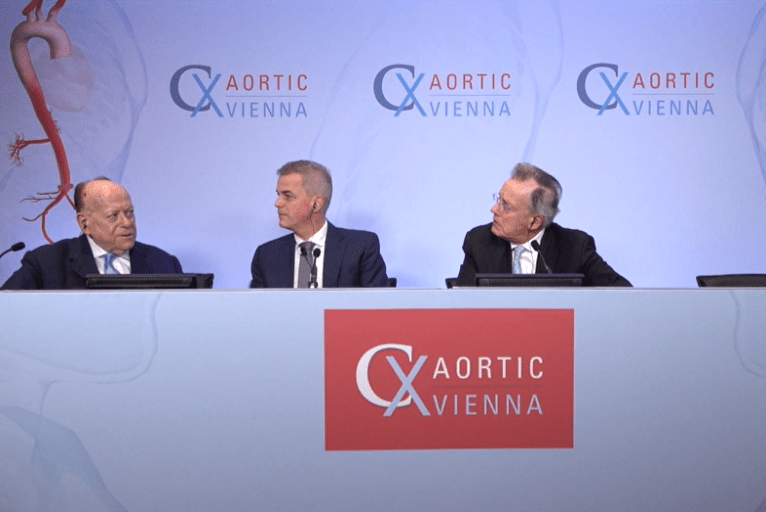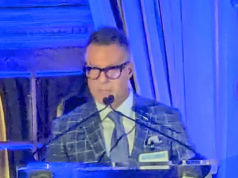
The need for vascular companies to home in on developing longer-lasting devices—perhaps even ones that adapt over time to match patients’ changing anatomies—was underscored as part of the Juxtarenal session on day two of the CX Aortic Vienna 2022 Digital Edition (Oct. 24–26).
Following a presentation from Michael Stoner, MD, professor of surgery at the University of Rochester in Rochester, New York, who detailed studies showing that device problems over time may instigate endovascular aneurysm repair (EVAR) failures more directly than anatomical factors, Roger Greenhalgh, MD, from London, England, posed the question of whether industry can rise to the challenge of preventing this in the future. “The desire of clinicians is for a device that can change with time as the aorta dilates,” Greenhalgh said.
In addition to devices that can conform to the ways a patient’s body changes throughout their life, devices that can cope with the more long-term expectations being places on them nowadays were also in focus, with Stoner noting that “patients are outliving the original graft designs.” Greenhalgh corroborated this view, praising Stoner for focusing on this topic, as engineers thought the implantable devices they made in the past may only be used for 10 years, but “we now expect [them] to last forever.”
Tilo Kölbel, MD, from Hamburg, Germany, stated that the reality is these devices often end up being repaired via other endovascular approaches, with explants frequently being required due to endoleaks too. This built on another part of Stoner’s presentation in which he identified type 1a, 1b and 3 endoleaks as the most common causes of EVAR failure.
Stoner also detailed the results of in vitro tests involving multiple different companies’ technologies that indicated failures over time were seen across many different devices—further demonstrating that this is consistent “across the board.”
Innovative techniques in focus
Also in day two’s Juxtarenal session, panel discussions following several edited cases highlighted the importance of innovative techniques to achieve success in challenging cases—as seen in a pair of edited cases from Kölbel in which he had to adapt his access approach in two thoracoabdominal aortic aneurysm (TAAA) patients.
In the first, he presented the delivery of a covered bridging stent via transcaval access in a ruptured Type V TAAA—ultimately detailing a “good result”—and, in the second, a thoracic endovascular aneurysm repair (TEVAR) procedure involving a “significantly sick” patient with a symptomatic pseudoaneurysm (TAAA Type II), who underwent transvenous access via the common femoral vein.
The presenter’s approaches to overcoming the challenges seen in emergent “no-access” anatomies drew praise from session anchor Greenhalgh and moderator Roberto Chiesa, MD, from Milan, Italy, for “thinking fast on his feet” to treat very sick patients with a “great, new idea.” Greenhalgh further noted that, while other practitioners may have approached these cases differently, you “cannot make a mistake with these patients” and they would most likely have died if he had not acted “very quickly.”
These talks were preceded by another edited case from Stefano Fazzini, MD, from Rome, Italy, who delivered the practical application of an on-label, chimney endovascular aneurysm repair (ChEVAR)-indicated stent graft in a ruptured abdominal aortic aneurysm (AAA). Among his concluding messages was the fact that ChEVAR is “not an easy procedure.” Responding to a question from Chiesa on managing proximal progression, he said ChEVAR is not “the ultimate” here, and branched endovascular aneurysm repair (BEVAR) may be a useful tool in the surgeon’s armamentarium.












